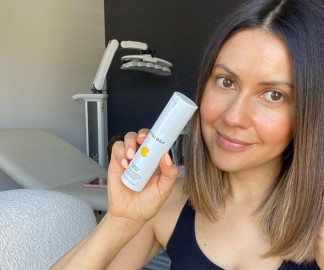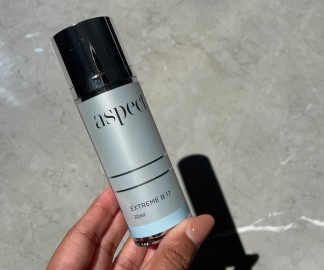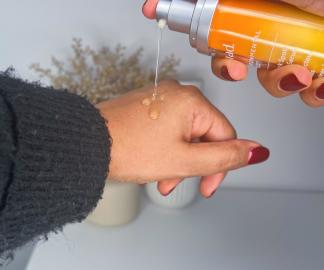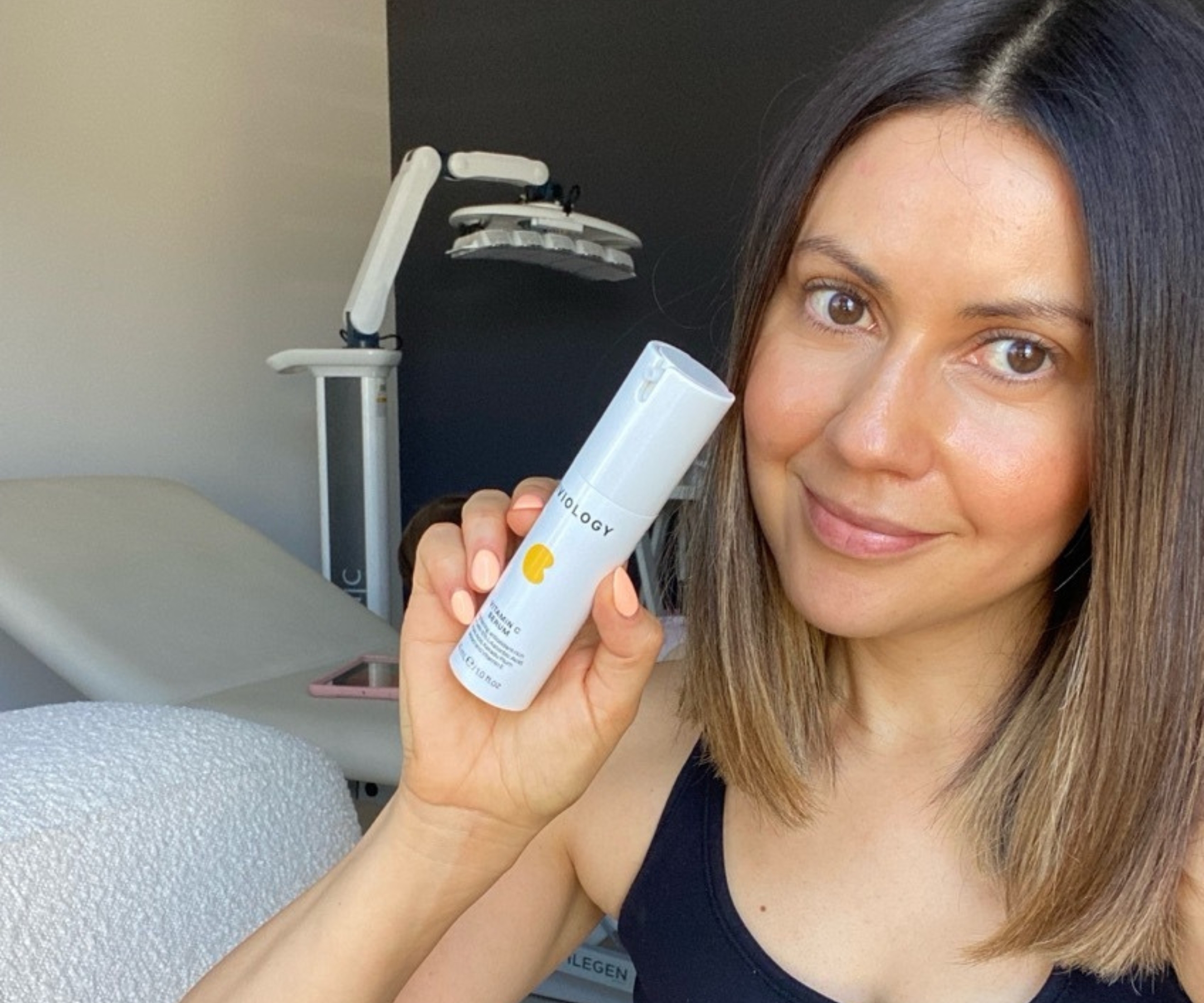
Post-acne scarring and marks including post-inflammatory erythema (PIE) and post-inflammatory hyperpigmentation (PIH) are all skin concerns that can happen following acne.
However, they are all quite different and a different approach is needed for each.
Which is why it’s important to determine what type of acne scar/mark you have first (and ensure your acne has been treated) before jumping into skincare and treatments - and as a Dermal Therapist, I’m here to help.
So let’s start by figuring out whether your scarring is actually a texture-based issue or a tonal-based issue i.e. Are you dealing with dark spots and/or erythema (redness)... or both?
Let’s go through each below.
Post-inflammatory erythema (PIE).
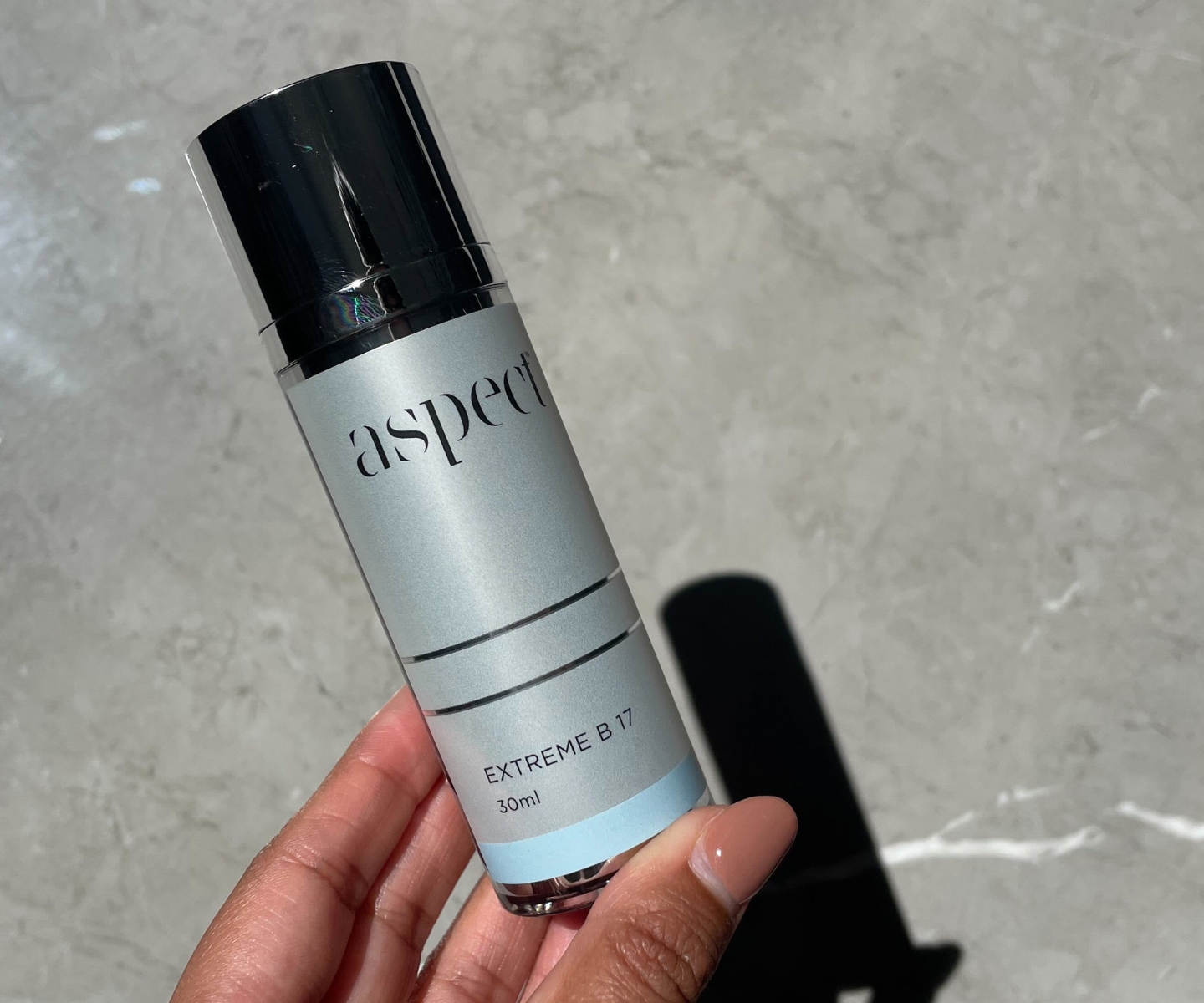
PIE can appear red, pink and sometimes even purple on the skin.
It happens after acne breakouts when tiny blood vessels in the skin stay dilated, causing redness. It’s very common and it is probably the easiest to get rid of/does fade on its own.
So time is a very important factor when treating post-inflammatory erythema!
Skincare:
Adding a niacinamide - between 2-5% into your routine is great for helping to fade PIE, as is using calming ingredients such as Centella Asiatica which is great for soothing inflammation, or azelaic acid as this too reduces inflammation and improves redness.
(However: due to Australia’s regulations azelaic acid is currently classified as a Pharmacy Medicine (Schedule 2), meaning higher concentration products require pharmacist supervision and are not available over the counter - and I’m pretty sure the regulations around this ingredient will be getting stricter later in 2024. Just FYI.)
The best products for post-inflammatory erythema:
La Roche-Posay Toleriane Sensitive Riche Prebiotic Moisturiser for Dry Skin - contains niacinamide but is also a fave for calming the skin.
Aspect Extreme B 17 - best for an oilier/combo skin. Viviology Niacinamide + HA - best for dry/dehydrated skin.
SkinCeuticals Metacell Renewal B3 Emulsion - super hydrating/barrier-supporting B-based emulsion.
Post-inflammatory hyperpigmentation (PIH).

PIH is a temporary or permanent darkening of the skin that occurs after inflammation (like acne) or injury.
The inflammation causes an overproduction of melanin in the epidermis and it tends to be more common in people with darker skin tones.
It can take a little longer to heal and manage than PIE, so give it time.
Skincare:
Sunscreen is non-negotiable, but also evidence proves tinted sunscreens with iron oxides are beneficial too - so layer that on top!
Exfoliating regularly is important to help with skin cell turnover so add lactic or glycolic acid into your routine, depending on your skin type.
Make sure you include some pigment-blocking ingredients in your routine like alpha arbutin and/or kojic acid/tranexamic acid, alongside ingredients like ascorbic acid which can help minimise how much pigmentation is formed.
Vitamin A is also beneficial alongside your pigment blocker.
And if your PIH is really bothering you, chatting to a doctor or dermatologist can help as there are great prescription topicals that can be beneficial when needed.
The best products for post-inflammatory hyperpigmentation:
Murad Rapid Dark Spot Correcting Serum - pigment blocker with tranexamic and glycolic acid.
PCA Skin Pigment Gel Pro 29ml - pigment blocker with hexylresorcinol, tranexamic acid, licorice root.
Ultra Violette Daydream Screen SPF50 Tinted Veil - popular tinted SPF with iron oxides! Layer on top of any broad-spectrum SPF.
Viviology Vitamin C Serum 30mL - ascorbic acid based, budget-friendly.
SkinCeuticals Retinol 0.5 - this is a spicy vitamin A - start slowly!
Important note: Sunscreen is only one part of sun protection so wear protective clothing and seek shade. Avoid prolonged sun exposure. Reapply every 2 hours and after swimming, towelling and perspiring in accordance with directions.
Textural Scarring.
Scars happen when your skin is undergoing a healing process and to be honest, textural scarring can look very different on every skin.
Some scars are flat, some pop up and some can tighten as the skin heals.
You see, when there’s a wound that only affects the epidermis (the top layer of the skin), that scar will heal seamlessly and you probably won’t see any long-term effects on the skin, but when the wound goes into the dermal layer?
That’s when the wound healing process gets a little more complicated and you’re likely to end up with a scar.
Also FYI treating scars in-clinic can take anywhere between 6 months - 1 year and a half.
You also can’t address textural scarring with skincare, which is why getting professional advice is key because there are clinical treatments, including microneedling, lasers and even deep chemical peels that can be beneficial.
Tune into the below video for more on microneedling and the treatment's benefits.

